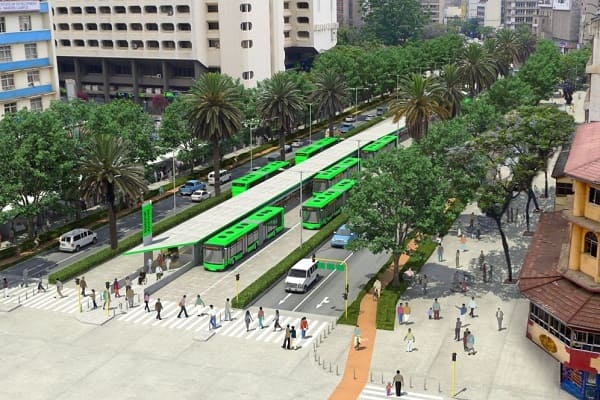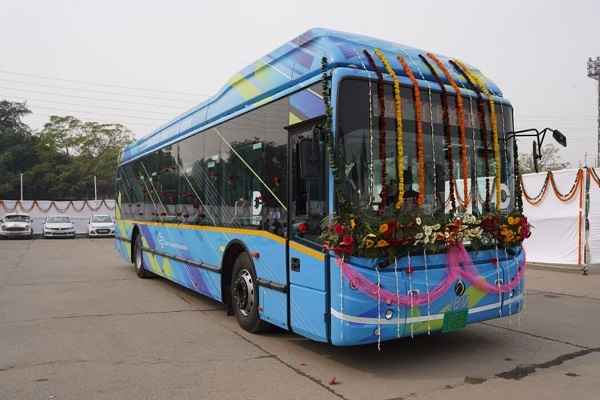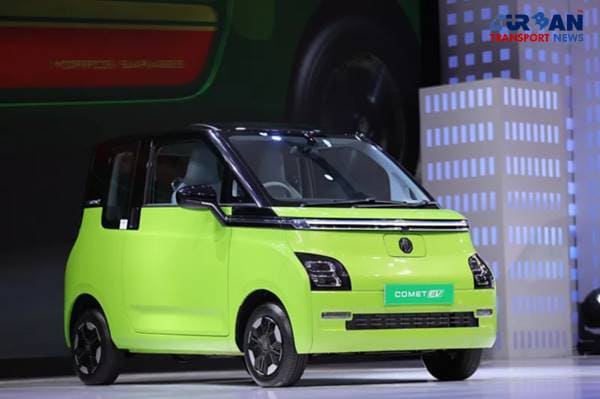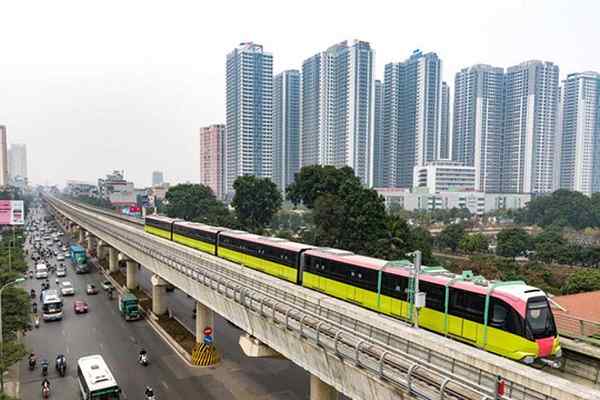 Vietnam plans new metro rail lines to replace its BRT systems in Hanoi
Vietnam plans new metro rail lines to replace its BRT systems in Hanoi 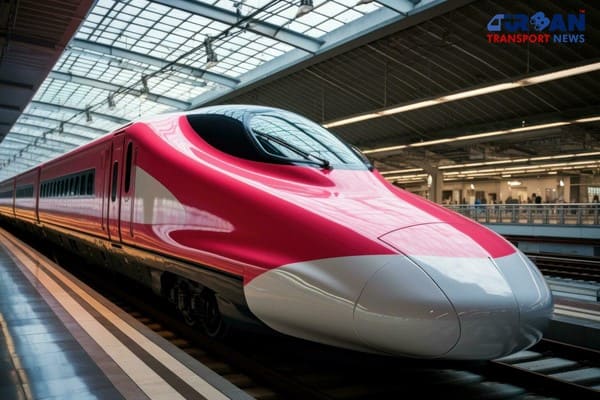 Revolutionizing Indian Railways: The Rise of Indigenous High Speed Bullet Trains
Revolutionizing Indian Railways: The Rise of Indigenous High Speed Bullet Trains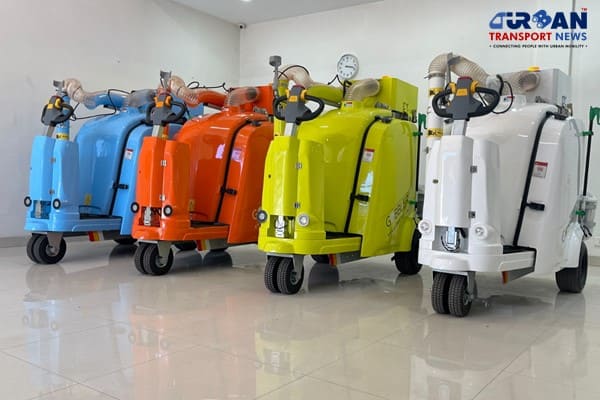 Ayodhya deployed Gobbler Litter Buster to keep the City clean
Ayodhya deployed Gobbler Litter Buster to keep the City clean BMW's Emissions Investigation: What Does It Mean for Drivers?
BMW's Emissions Investigation: What Does It Mean for Drivers?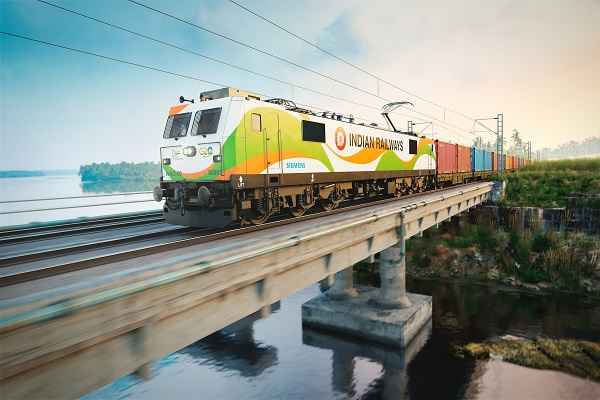 171 Years of Indian Railways: A History of Innovation and Progress
171 Years of Indian Railways: A History of Innovation and Progress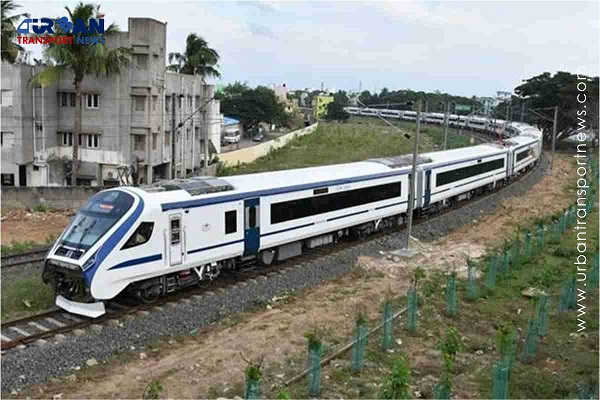 Vande Bharat Express trains carries over two crore passengers since their inception
Vande Bharat Express trains carries over two crore passengers since their inception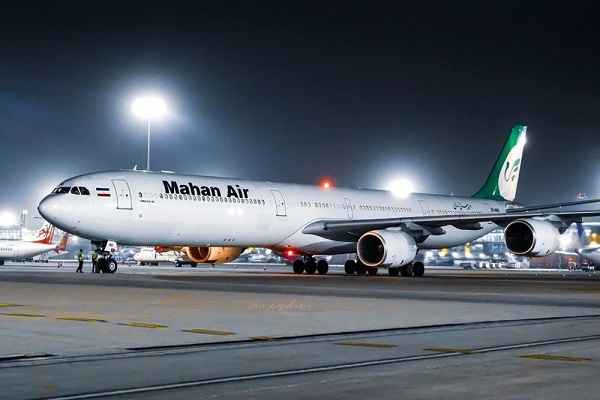 BPCL partners with Noida International Airport to construct ATF Pipeline
BPCL partners with Noida International Airport to construct ATF Pipeline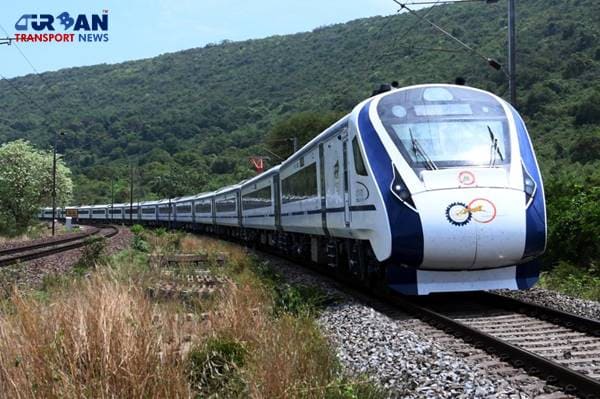 What are the Railway Development Plans in BJP's Manifesto for 2024-2029?
What are the Railway Development Plans in BJP's Manifesto for 2024-2029?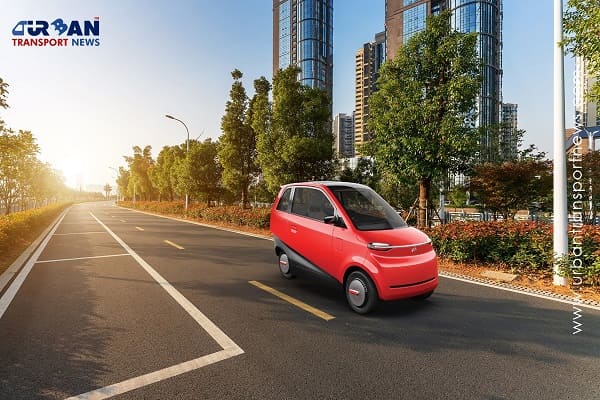 Latest innovations shaping the urban mobility sector across the globe
Latest innovations shaping the urban mobility sector across the globe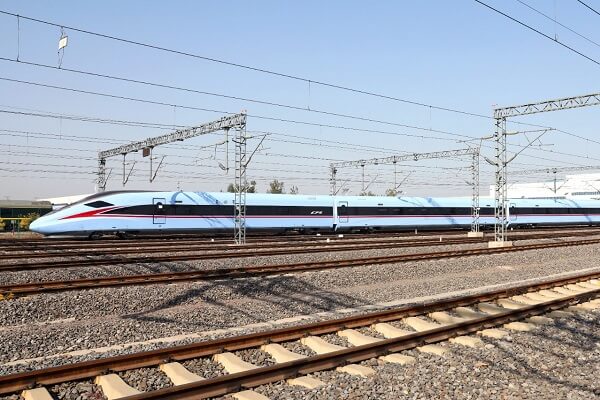 California issues RfP for procurement of High Speed Bullet Trains
California issues RfP for procurement of High Speed Bullet Trains
Exclusive interview with Abhijeet Sinha, Project Director, National Highway for EV
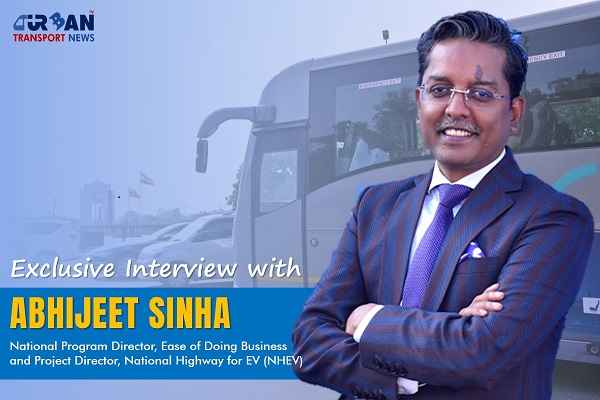
Abhijeet Sinha is a Technocrat, Policy Entrepreneur currently contributing with tech pilots in the Prime Ministerial initiative on Ease of Doing Business as National Program Director of EoDB Services.
Previously associated with Vibrant Gujarat, Pilots of NPR-UIDAI,IMNCI (Asha-Anganwadi) before joining then CM Modi’s Citizen for Accountable Governance (CAG) team in 2014 parliamentary polls. His expertise as a nex-corporate banker was recognized with success in large infra financing on PPP with Hybrid and Annuity Financing models like AHEM, DHAM; used in various EoDB emerging tech pilots NHEV, DIISHA. He is also President of CPOs India and holding additional charge of renowned National Highway for EV (Jaipur– Delhi– Agra) Pilot Project Director, where he has completed India’s longest 210km E-Highway TECH-Trial Run between Delhi– Agra in 2020.
Early this year in 2022, he commissioned two of India’s Largest EV charging stations with100+112 chargers with a capacity to charge 1500 cars in 24 hours and recorded maximum 72% utilization with a minimal break even tenure of 36 months.
In recent intraction with Urban Transport News, Mr. Sinha has shared some very interesting information on next-generation technology to be applied for making EV Industry reliable, safer and sustainable.
First, kindly tell our readers about your professional journey and vision towards making India a 5 trillion economy through ease of doing business and tech pilot projects.
I belong to a banking background and one of those 200 elites who left their highly paid posts in 2013 to work for the vision of our current prime minister Shri Narendra Modi. After PM’s election, I continued to work towards his nation building mantra which is, Reform-Perform-Transform. As the name itself suggests, Ease of doing business (EoDB) is an entity which simplifies the business operations, whether it's via carrying out pilot project, providing ecosystem or anything else.
The organization serves a sole purpose, which is to turn the vision of making India a 5 trillion economy in reality. To comprehend this, let's go through each of its three elements.
Reform: Firstly, finding out the emerging technological intervention potentials in 30 various sectors. Then developing required reforms in the business framework to turn this potential into reality. This is the first part of PM’s vision, Reform-Perform-Transform.
Perform: Perform denotes that pilot projects and commercial prototypes have paramount potential to deliver sustainable, achievable and viable policy inputs to achieve transformation and a sophisticated entrance of these emerging technologies in Indian economy.
Transform: Lastly, Transform signifies the commercial equivalence drawn by these pilot projects and prototype hybrid funding/business models to create a swift and monumental scale up on a much higher pace through model RFPs (Request for Proposals), concession agreements, Internal trade agreements (ITA) and Hybrid annuity models.
With each such emerging technological intervention, GDP contribution in 30 different sectors of economy handled by EoDB team, contributes to unify an additional income which never existed before and only materialized in the business ecosystem after the pilot projects conducted by the EoDB division.
Kindly highlight some major initiatives taken under ease of doing business. How is ease of doing business contributing to a circular economy?
There are approximately 26 emerging technologies (such as Artificial Intelligence, immersive media, robotics, drones, etc.) which are in the focused thematic area of EoDB, where continuous piloting and prototyping is taking place to bring them in mainstream economy distributed in 30 sectors.
The brilliant part of EoDB’s output from these piloting and prototyping which contribute as a revenue source or increment into the GDP is that all initial investments and fundings deployed to these scale ups are for a small period and soon these projects will reach their breakeven and start yielding profits on an unimaginable but fixed pattern. In a short time, these projects will become operationally autonomous and financially self-sustainable. This creates an excellent model to hold and grow the circular economy.
Kindly highlight some salient features of the National Highway for Electric Vehicles (NHEV) Pilot Project. What is the current progress of this project and timelines to complete the project?
The four noteworthy features of National Highway for Electric Vehicles (NHEV) include:
1. Electric Mobility as a service
Till now, majority of the population viewed E-mobility as a product. However now with NHEV, electric mobility is transmuting into a service for the people. This is a culture shattering step which promotes renting/booking an EV rather than buying it.
2. New financing model for EVs
For the first time, a new financing model for E-mobility in highway is introduced. NHEV has created a funding model called Annuity Hybrid E-Mobility (AHEM).
3. E-Mobility turned profitable
With two complete charging stations and many more to be constructed, NHEV has turned E-Mobility profitable. This brings charging station in direct competition with fuel pump stations technically, financially and commercially.
4. World's longest E-highway Tech Trial
NHEV has completed world’s longest technical trial, TTR1 between Delhi and Agra to achieve success over four pain areas of the industry.
- NHEV offers backup under 30 minutes during vehicle breakdown,
- 30% lesser EV prices for the fleet operators,
- more than 30% utilization of charging stations and
- lastly the project reaches breakeven within 36-40 months.
Two completely functioning charging stations and miniature unveiling of future charging station by Mr. Nitin Gadkari accounts for the current progress of this pilot project.
Are you also considering induction of E-Logistics services through NHEV?
With respect to E-Logistics integration, there will be a Cargo hub at every NHEV charging station which will be working in collaboration with electric two-wheeler and three-wheeler showrooms, also available at the station itself.
These showrooms will provide their E-vehicles to the nearby village youth on a subscription basis which will enable them to pick packages through an app and deliver them within a 50-kilometre radius of the station. Cargo Hub will work in partnership with companies such as Amazon and Flipkart.
It will prove to be a win-win situation for all as the injection of this service will not only provide more employment opportunities but also increase E-Commerce coverage to remote areas in the station’s radius, which were earlier deprived of such services, sustainably.
Kindly highlight some major challenges you have faced/are facing during the trial run on the NHEV pilot project at ground level and how did you overcome them?
Numerous reforms such as the license-free set-up of charging stations were introduced but not executed properly, creating negligible impact in the eyes of the public. There were three major difficulties in our path:
- Firstly, the Setup, detailing, and even micro-detailing of a petrol pump is clearly defined in the public domain but standard norms and other relevant details for setting up a charging station were yet unknown and confusing.
- Secondly, there was ample financial support for the notion and dialogues but at an individual level, financing was a struggle.
- Third, everyone knew infrastructural investment is a high CapEx business and the CapEx recovery periods of projects like Petrol pumps or metro were defined and calculated, but the breakeven for setting up of charging stations was unknown leaving the investors confused.
Determined to bring happiness and confidence to our stakeholders, NHEV was able to solve these problems in the following ways:
- Charging stations with micro details were set up to know the commercial and technological viabilities for a clearer definition of its norms, reducing confusion.
- The Annuity Hybrid E-Mobility (AHEM) model inspired by Hybrid Annuity Model (HAM), a road financing model, was introduced to solve the struggle for finance and present a defined value for the charging station.
- With a high charging infrastructure utilisation rate of 30% by NHEV as against 3% in cities, 36-40 months are sufficient for the CapEx to be recovered which no one could figure out before.
What is Hybrid Annuity Model (HAM) or Annuity Hybrid E-Mobility (AHEM) and how does it work as a new infra-financing tool for NHEV?
Before NHEV, no one ever stepped in for EV infrastructure financing for highways, thus it came up with Annuity Hybrid E-Mobility (AHEM) inspired by Hybrid Annuity Model (HAM) holding the capability to change any 300 km highway or expressway into an E-highway within 90 days with charging stations, EV car fleets and buses, along with swift Roadside Assistance (RSA) and less priced EVS for nonstop running on the stretch to secure their repayment.
Under AHEM, procurement is done from on-boarded partners and suppliers, selected based on their performance and capabilities unlike traditional lowest bid wins criteria, for CapEx in a fixed amount and deliverables for a considerable period of 12 months (Annuity) to earn OpEx for breakeven in 36 months. This model offers great flexibility and liquidity to the project partners.
NHEV has made e-mobility profitable for the first time and is planning to expand by bringing the charging station in direct competition with the petrol pumps technically, financially, and commercially.
What is the future of E-mobility in India and what E-mobility players can expect from NHEV? Will the NHEV project also create new business opportunities for start-ups working in e-mobility and charging infrastructure segments?
NHEV is an Ease of Doing Business initiative for the E-mobility sector. This pilot aims to bring maximum Ease of Doing business for the sector of Electric mobility and create a platform similar to the way that Amazon or Flipkart provides for the listing of products by manufacturers and MSMEs which are then ordered and delivered to the end user.
In the NHEV ecosystem, all the suppliers conducting the pilot with us go through a rigorous process of acceptance in terms of certification, training, and technical and commercial viability. Once successful in the onboarding process, the suppliers get orders from the NHEV but most importantly enable them to be listed for procurement in future highways projects.
This framework, unlike the traditional procurement models which take up to two years, is quicker and easier where the entire process from onboarding to trial and final delivery is completed within 6 months and with the autonomy to the supplier to introduce the most advanced technologies which could not be achieved earlier due to numerous restrictions and hurdles.
The NHEV ecosystem not only supports the existing players but also uplifts emerging start-ups and enables them to play a key role in developing E-mobility and charging infrastructure for the new India.
We learnt that NHEV will have an Anti-Theft System. How will this system help the EV owners/operators? Kindly elaborate more about this new technology.
NHEV will be able to create an Anti-Theft system for EVs through the synchronization of three key players:
The EV
EV is registered as electric equipment through a Central Electric Vehicle Equipment Registration System where it also gets its UID. Unlike traditional fuel cars, EV theft cases will be handled by Cyber cells, not police, which further shares this data with the National Crime Records Bureau (NCRB).
The Battery
Certification agencies like the Automotive Research Association of India (ARAI), and the International Centre for Automotive Technology (ICAT) do rigorous approval testing of Battery Management Systems (BMS) before registration. EV batteries also get a unique serial number and batch ID for easy tracking.
The Charger
AC chargers deployed for private utilization require CAF compliance like obtaining a sim card. They require a downloadable app which constantly updates the charger with the Central Electric Vehicle Equipment Registration System data. Similarly, DC chargers are deployed for commercial purposes and are always connected to the internet and auto-update.
In the case of EV theft, the cyber cell updates the NCRB data, and the EV ID is flagged as stolen in the central data repository. The Battery Management System (BMS) gets flagged by the Central Electric Vehicle Equipment Registration System which deprives it of charging services at the charging stations, on the other hand, Chargers get regular data updates through the central repository and do not charge the car in case the EV is flagged stolen, hindering its mobility.
This puts and to the Theft Sale & Drive through effective tracking and unavailability of charging and poses difficulty in Theft & Dismantle as the battery accounts for much of the saleable parts which is trackable leaving behind just the chassis and frame.
NHEV will create an ecosystem of anti-theft EVs with a staggering 95% success ratebringing confidence towards EV adoption among stakeholders such as Banks, People, Insurance Companies and Fleet Operators.
We learnt that the NHEV project is also backed by Public-Private-Partnership (PPP) financing model. How is the PPP model structured in NHEV?
The financing model for NHEV is called Annuity Hybrid E-mobility (AHEM), inspired by Hybrid Annuity Model (HAM) which was introduced by Shri Nitin Gadkari in 2015. The HAM model is an amalgamation of Toll-Operate-Transfer (TOT), Build-Operate-Transfer (BOT) and Engineering, Procurement, and Construction (EPC) models, which has gained great recognition and appreciation from renowned credit rating agencies and institutions such as CRISIL, Moody’s, the IMF, and the World Bank.
The introduction of HAM quadrupled the speed of road construction from 9 Kilometre per day to 38 kilometres per day. A similar impact will be seen with the introduction of AHEM for converting highways into E-highways through an accelerated process and a significant reduction in cost and time. The model is a PPP where the land is to be allotted by the National Highways Authority of India (NHAI)and the priority to own CapEx, construction, and installation is given to power and petroleum PSUs followed by banks and NBFCs and finally the private players such as Shell and Jio-BP who are already pioneering in this sector. Finally, the model also provides the option for common people such as you and me to own the charging infrastructure.
This achieves a rollout plan of a bold reform by the Government of India to encourage people to take ownership of charging stations by simplifying regulations and removing license requirements.
Do you think India's zero-emission target can be achieved only if the price of EVs comes under the budget of common people? According to you, when will a common man be able to switch from Petrol/Diesel-powered Vehicles to Electric Vehicles?
We are witnessing a significant reduction in the idea of owning a vehicle among the newer generation. They are more inclined towards using automobiles as a service centred around the idea of using on demand and then returning to the operator and not owning and using. The NHEV project is aligned with similar principles as electric buses and cars from Green Cell Mobility and Blu Smart respectively are deployed on the route which comes with an option to rent and use even without a driver for which two trials have already been conducted. These vehicles are not pulled out after the trial and are continuously in service on the route to let people experience the luxury equivalent of state-of-the-art in-flight level services that include Hot/Cold Towels, Sanitizers, Tissues, Service Hostesses, Soup, Snacks, Juices, Soft Drinks, Personal Screen in front of each seat for Music, Internet Surfing and Work for themselves. We call this “Pehle Istemal Karein Fir Vishwas Karein”.
The availability of such options for the public will give them more convenience, comfort and confidence to adopt them which will play a significant role in aiding people to switch to EVs which will pave the way for achieving the target of zero emissions for India.
You have recently joined and shared your thoughts on investment, financing and business avenues in major urban infra sectors in India at our annual flagship program 2nd Urban Infra Business Summit & Awards 2022 held on 7th November 2022 in New Delhi. What is your feedback on this program and suggestions for next editions? Would you like to share some message with the industry leaders?
It is an excellent selection of companies and initiative which is bringing emerging technologies in the metro rail and train sector. The cherry-picked solutions and interventions of latest technologies into mass use were appreciated through awards, rarely available, this is the path of growth India as an economy requires today. This growth will provide us with the confidence to propose our large volumes of success in front of the world. Our strength to manage high transportation network length and ability to move millions of people on a daily basis. This strength and potential of handling such high volume will place India in the ranking of efficiency, transparency, accountability and precision.
A country like us who can deliver these results, definitely is most preferable to carry out such executions of this extent in other country in the future. The way we manage our transportation system, semiconductors, and other sectors is more than sufficient to manage smaller countries with smaller populations. The idea of new India is to not only become a product hub but also lead in the emerging technologies. My suggestion would be to include multiple forms of mobility and not only limit to Metro and railways. Rather include road transportation, aviation, drones, etc. Auxiliary services and their innovations can also be a part of the next edition.
Urban Infra Business Summit & Awards has not only grown as a conference or discussion platform but also building a path to these success stories for mass awareness about implementation and investment of emerging technologies and demonstrating the cycle of investment along with its impact. This is the model of circular economy for technology.
I extend my best wishes to the organizers and all the industry stakeholders to bring more inputs in technology and showcase more such ecosystems.





